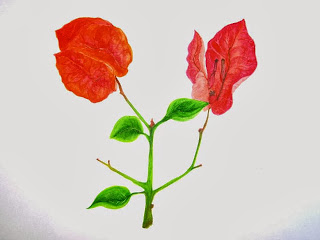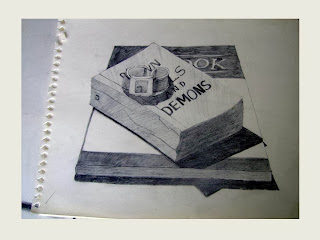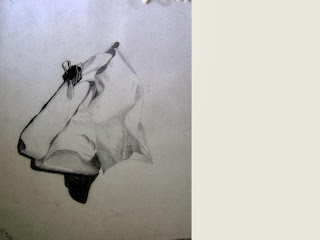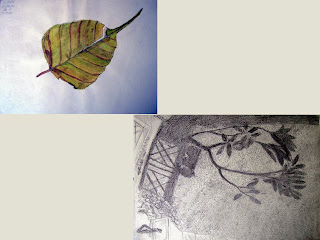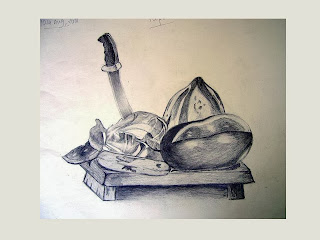Thursday, 12 December 2013
Genesis Global School, Noida, CBSE, IB - PYP, IGCSE and IB Diploma
| A-12, Sector-132, Expressway, Noida - 201301 | ||
| Mobile | : | +91-9711000498, 9711000560, 9711000625, 9711000626 |
| : | principal@genesisgs.com | |
Art Facilitator
SEPTEMBER 2011 – PRESENT
Role of engagement:
Teaching in CBSE, IB PYP, IGCSE curriculum (Art History and Appreciation, Art & Design, Fine Art, Graphic Art, Photography and Video Making, Portfolio Presentation, Syllabus planning, Coordinating Events and exhibition, Assessments and research art project)
VISUAL ARTS CURRICULUM
“Every child is an artist. The problem is how to remain an artist
once we grow up”. – Pablo Picasso
Aims & Beliefs
The aims of teaching artists are
- to enable the child to explore, clarify and express ideas, feelings and experiences through a range of arts activities
- to provide for aesthetic experiences and to develop aesthetic awareness in the visual arts, in music, in drama, in dance and in literature
- to develop the child’s awareness of, sensitivity to and enjoyment of visual, aural, tactile and spatial qualities in the environment
- to enable the child to develop natural abilities and potential, to acquire techniques, and to practice the skills necessary for creative expression and for joyful participation in different art forms
- to enable the child to see and to solve problems creatively through imaginative thinking and so encourage individuality and enterprise
- to value the child’s confidence and self-esteem through valuing self-expression
- to nurture a sense of excellence in and appreciation of the arts in local, regional, national and global contexts, both past and present
- to nurture a critical appreciation of the arts for personal fulfillment and enjoyment.
Structure and Layout
The visual arts
curriculum is structured to provide a broad-based and balanced programme for
each of four levels: Nursery, KG and First classes, Second and Third classes,
Fourth and Fifth classes. Each level has eight strands, which are organised to
ensure a balance between making art and looking at, responding to art and transforming to art.
The strands are
1.
Drawing
2.
Paint and colour
3. Print
4. Clay
5. Construction
6. Fabric and fibre
7. Digital Art-Visual Media
8.
Performance and Ephemeral Art
The strands
1. Drawing
Through drawing, they
create and express imaginary worlds and give free expression to their
imaginative powers. Older children also use drawing to clarify, develop and
communicate plans. As they progress they demonstrate a developing visual
awareness in their drawings and sensitivity to the expressive powers of other
artists' drawings.
2. Paint and colour
Student develop an understanding and
appreciation of colour from observation of and delight in colour seen in nature
and in manufactured objects, and they use colour to express their experiences,
interests and imaginative ideas. As they progress they demonstrate a developing
awareness of colour in their own work, a growing sensitivity to other artists'
expressive use of colour and its impact on crafted and designed objects.
3. Print
Through experiences in print-making,
children learn to focus attention on and deepen their understanding of graphic
processes. They have opportunities to experiment with print-making techniques,
to use them inventively, and to produce prints for functional use as well as
for their own sake. As they progress they learn to take a more thoughtful
approach to shape edges, layout and composition in print-making and develop
sensitivity to the expressive qualities in the work of graphic artists.
4. Clay
Through experience of
clay and from a need for expression, they learn the skills of forming and
changing it in increasingly purposeful ways. As well as sculptural expression,
they have opportunities to design and make objects for use and wear (the latter
to a limited extent in the absence of a kiln), using their powers of invention
and expression. Developing sensitivity to underlying form in the environment
and in art works enables them to enjoy and appreciate great sculpture and to
appreciate craft objects critically.
5. Construction
Construction
activities provide opportunities for exploring imaginative worlds in
three-dimensional media. Children are encouraged to make imaginative and
expressive use of materials for designing and inventing and to make models to
their own design. This involves exploring the possibilities of the materials,
experimenting with new ways of balancing and combining them, and developing
understanding of structural strengths and possibilities. Experience in
construction helps children to look with curiosity and enjoyment at structures
in nature and to develop sensitivity to and appreciation of the structures of
great architects, sculptors, and craftspeople.
6. Fabric and Fibre
Work in fabric and fibre helps student
to be curious about how everyday fabrics are structured and develops greater
sensitivity to colour and tone, texture, line and shape. They are encouraged to
use fabric and fibre as materials for imaginative invention in both two- and
three-dimensions, for example to use free stitching as a way of changing or
developing a fabric surface; to create their own fabric, using fibre imaginatively
and with a developing range of techniques; to use fabric and fibre to interpret
three-dimensional natural forms, and to express imaginative play through
puppets and costume-making. Through work in fabric and fibre, children begin to
understand some craft procedures and skills and some of the creative design
processes in craft weaving, knitting and fashion design, for example. As they
progress they develop the ability to appraise craft materials critically for
suitability for a particular task, as well as the artefacts and art works that
are carried out in these media.
7. Digital Art – Visual Media
Sub Strands: Photography, Individual Film Making, Music Video and Photo
Montage etc…
This strand is aimed at the changing educational
needs of the Fine Art student in a time of rapidly evolving technological and theoretical
advances in the Digital Art. Digital art is a general term for a range of
artistic works and practices that use digital
technology as an essential part of the creative and/or presentation
process. The impact of digital technology has transformed activities such as
painting, photography, drawing, sculpture, video, music/sound art, while new
forms, such as net art, digital installation art and virtual reality have
become recognized artistic practices. The strand offers students the chance to
experience a variety of photographic and video approaches to aesthetically and
will develop visualizing skills for an understanding of the use of images in
current society. Student should be introduced to a variety of experiences
exploring a range of photographic media, Audio-Video techniques and processes.
They should be made aware of both traditional and new technologies. The
availability of new affordable equipment that combines photographic and video
technologies has given artistic access to new methods of production, changing
the nature of lens based image making.
8. Performance and Ephemeral Art
In performance art, the artist’s medium is the body, and the live
actions he or she performs are the work of art. The term, used loosely at
first, arose in the early 1960s as American practitioners sought a way to refer
to and describe the many live events taking place at that time. Performance art usually consists
of four elements: time, space, the performer’s body, and a relationship between
audience and performer. Traditionally, the work is interdisciplinary, employing
some other kind of visual art, video, sound, or props. Although performance art
takes the form of live action, it has reached a large public audience through
documentation of the performance.
Everything is ephemeral, because everything is subjected to the flow and
transformation of the life. Buildings, all forms of artworks, sculptures,
paintings, music, theatre, movies … The ephemeral is conceived as the link
between the contemporary arts. Its transformative performance is related to the
transformation of materials, their origins, application; cycle of life, death,
recycling … the ephemeral is able to be a new experimental paradigm for
sustainable development.
The value of the
interaction between arts is strongly related to the dialogue between cultures.
We do not need selective and rigid categories of arts and of cultures and we
want to explore the richness of the combined value of arts and cultures working
together. They’ll operate simultaneously, they won’t have limits or boundaries
and they’ll cooperate at a new equal culture of making.
These activities help to develop
sensitivity to the elements of the visual world and to develop the child's
ability to communicate visually. They involve awareness of line, shape, form,
colour and tone, pattern and rhythm, texture and spatial organisation.
The development of perceptual awareness
helps children to see and to understand the world around them and to express
their ideas, feelings and personal experiences in visual form. Attentive
looking helps them to make connections between their own work and the work of
others. It also helps to develop concentration and the ability to focus
attention generally. These experiences are an essential part of every art
lesson.
A threefold structure is suggested for
choosing thematic content or subject matter, based on children's
Experience
Imagination
Observation
Curiosity
This structure provides opportunities for children to give visual
expression to inner concerns which may be difficult to put into words, to give
expression to the wonderful world of the imagination, and to pursue their
curiosity in the physical attributes of the world. Very often two or even three
of these are being drawn on in a single art activity or project, at variable
levels of importance.
The following skills are assessing for
student’s profile
Genesis
Visual Art Scope and Sequence adapted from © Making PYP Happen and IB PYP Art
Scope and Sequence documents
The Shri Ram School, Moulsari, Gurgaon - classes 6 to 12 IB, CISCE, NIOS
The Shri Ram School , DLF Phase III, Moulsari Avenue,Gurgaon
www.tsrs.org/
JULY 2008 – SEPTEMBER 2011
Role of engagement: Taught in ICSE
curriculum (Fine Art, Painting, Photography and Video Making, portfolio presentation,
Syllabus planning, conducting exhibition, Assessments and research art
project
ICSE –
BATCH 2009
–11
ELECTIVE
ART PROJECTS | ELECTIVE
ART PAPER 1 and PAPER 2
ICSE The curriculum for the ICSE is broadly divided into three
groups. Each student entering Class 9 opts for seven subjects from these three
groups for a two year period of study till class 10. At the end of class 10, the
student has to appear for an examination in the subjects he or she has studied.
ELECTIVE ART PROJECTS - Students Works
Subscribe to:
Comments (Atom)






























































